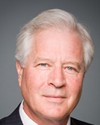I'll deal with the vulnerable persons first, perhaps, and then I'll focus more generally.
Under our existing guidelines, when we identify somebody as being vulnerable there is a requirement to identify a designated representative for them. That would normally be in two situations. One is where the person appearing before any division of the IRB, not just the refugee protection division, is a minor, for example, they would need a designated representative. Now, if they have a family member with them, particularly if it's a parent, normally it would be the parent who is the designated representative--not always, but normally. We can do the math on how old somebody is when the case is referred to us. But the other situation, which is sometimes a little more difficult, is with somebody who has difficulty understanding what's going on. In our current scenario the first time we would come across that would be when they appear before us at a hearing, which, as you know, in some instances could be 18 or 19 months after they've arrived in Canada.
We see the interview as an opportunity to identify that some people will need a designated representative earlier in the process, and this will allow us to trigger the designated representative process much earlier on.
Now, in terms of the interview process--




